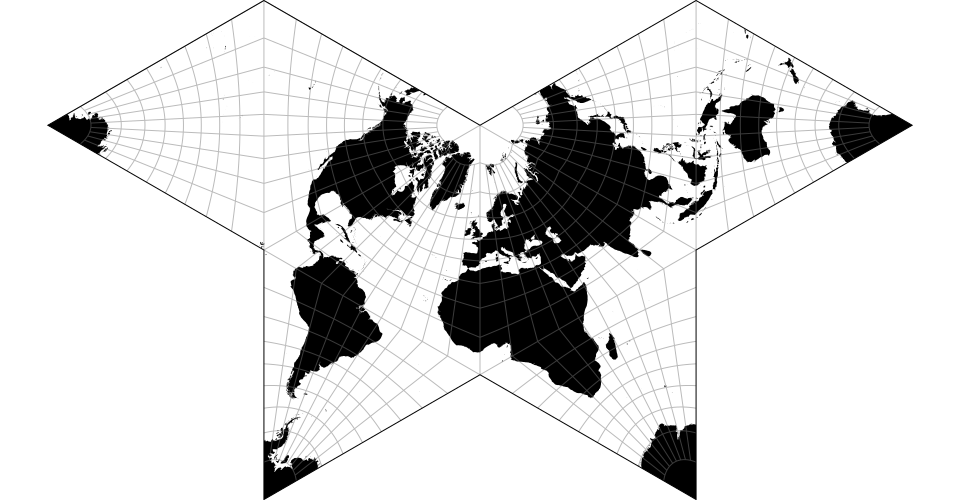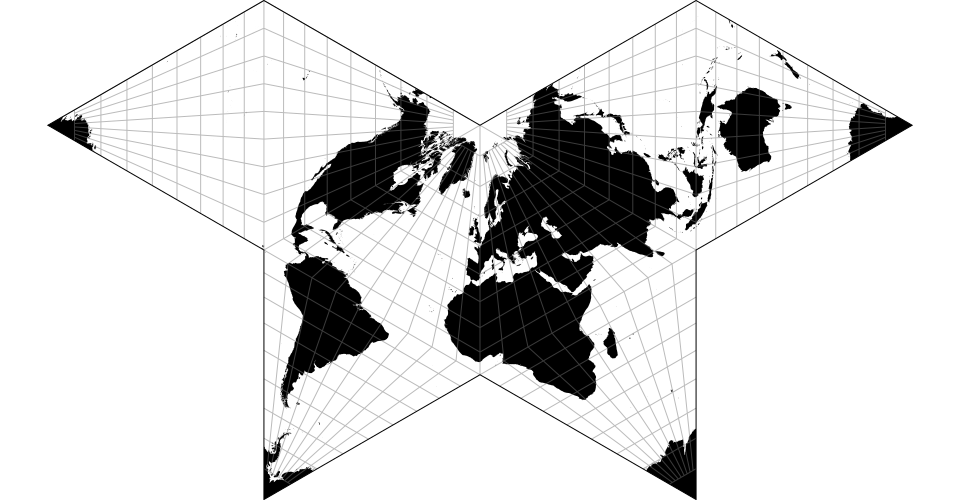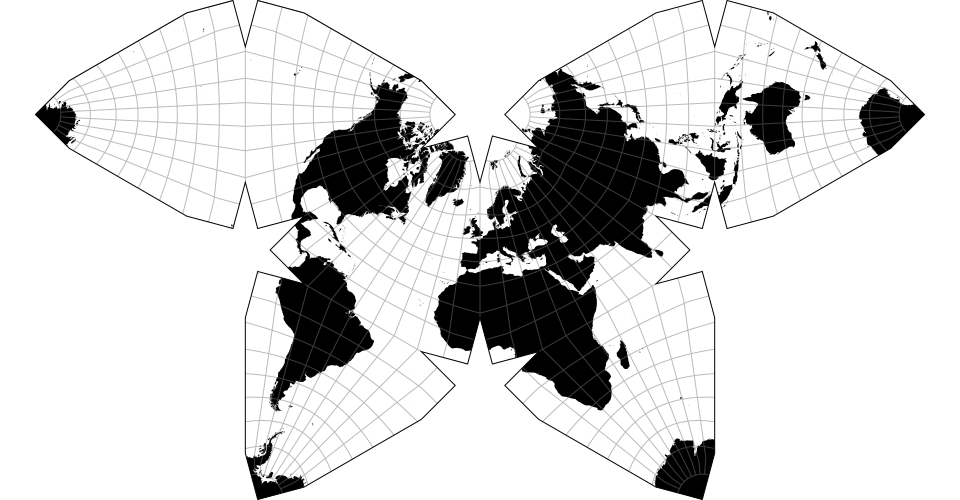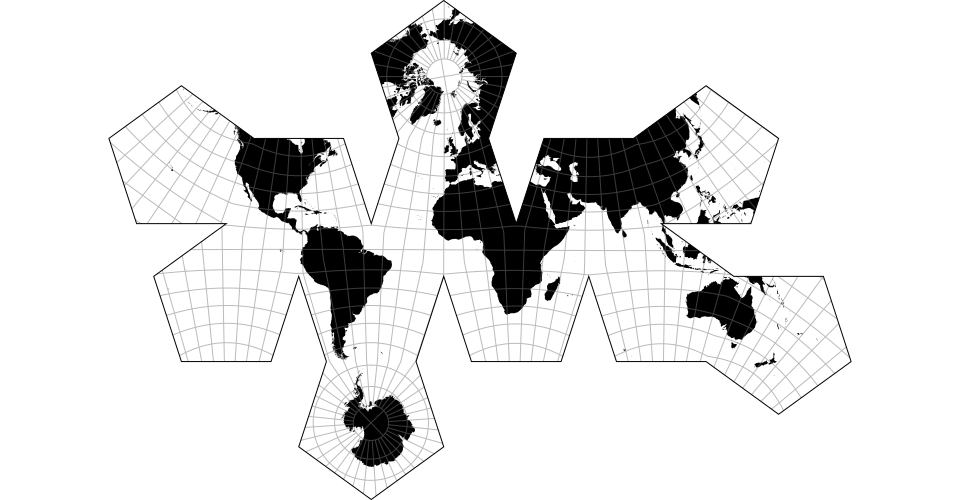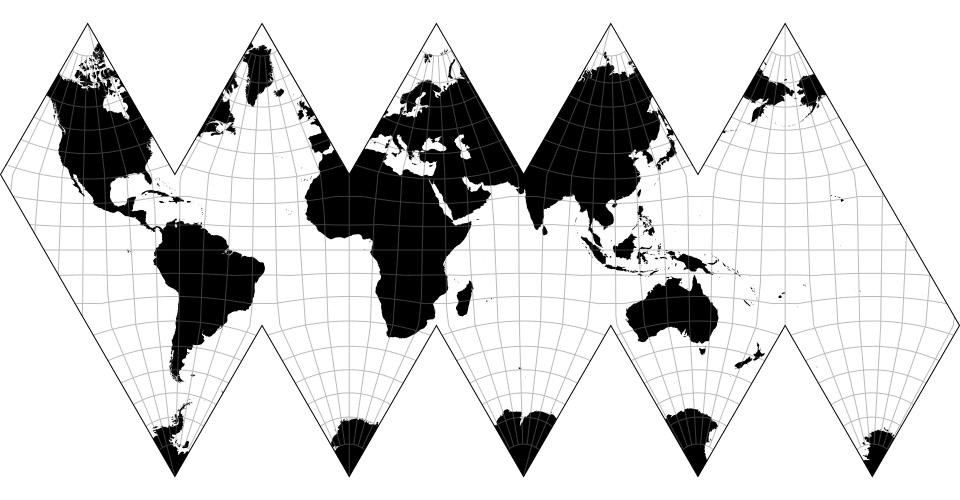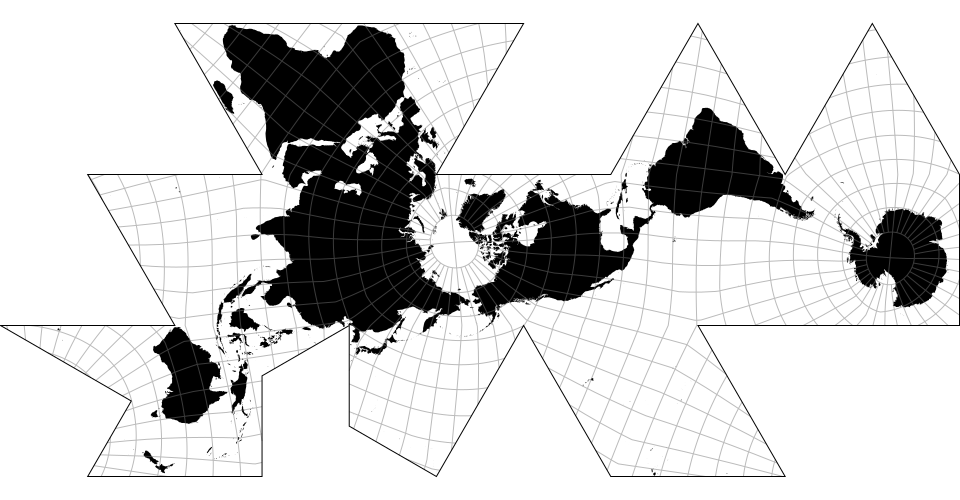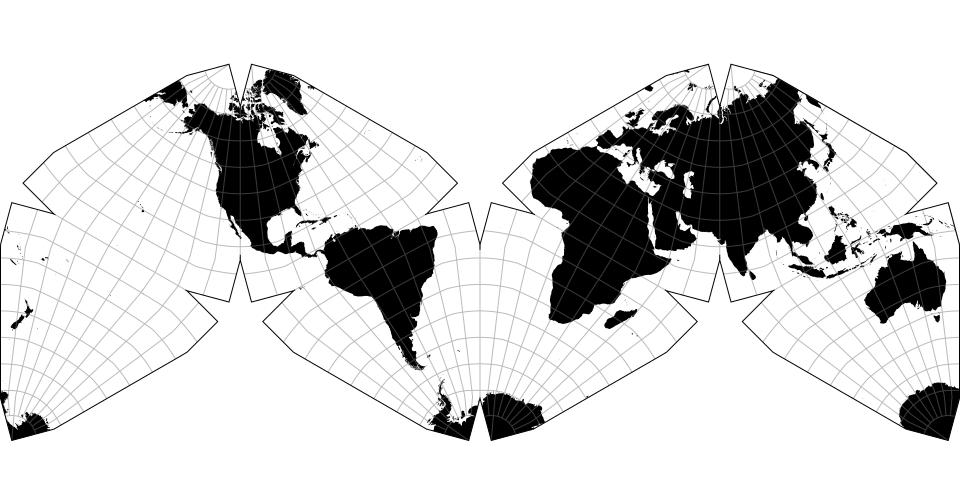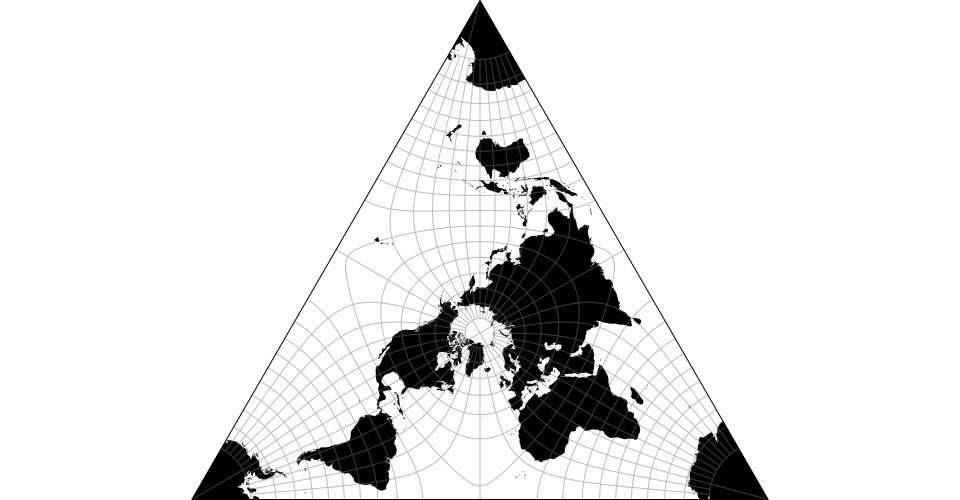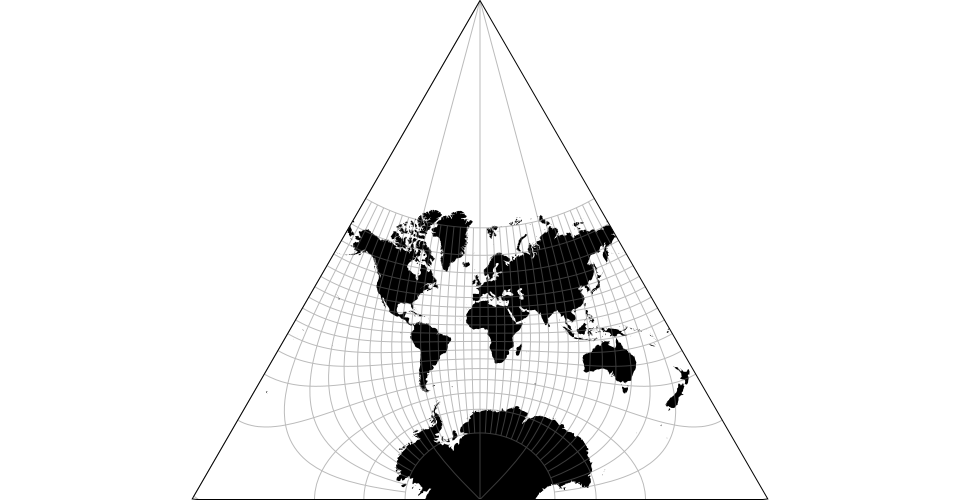Clipping and geometric operations for spherical polygons.
If you use NPM, npm install d3-geo-polygon. Otherwise, download the latest release. You can also load directly from unpkg. AMD, CommonJS, and vanilla environments are supported. In vanilla, a d3 global is exported:
<script src="https://unpkg.com/d3-geo@1"></script>
<script src="https://unpkg.com/d3-geo-polygon@1"></script>
<script>
// new projection
var projection = d3.geoDodecahedral();
// polyhedral projections don’t need SVG or canvas clipping anymore
var projection = d3.geoPolyhedralCollignon();
// arbitrary polygon clipping on any projection
var projection = d3.geoEquirectangular()
.preclip(d3.geoClipPolygon({
type: "Polygon",
coordinates: [[[-10, -10], [-10, 10], [10, 10], [10, -10], [-10, -10]]]
}));
</script># d3.geoClipPolygon(polygon) <>
Given a GeoJSON polygon, returns a clip function suitable for projection.preclip.
# clip.polygon()
Given a clipPolygon function, returns the GeoJSON polygon.
d3-geo-polygon adds polygon clipping to the polyhedral projections from d3-geo-projection. Thus, it supercedes the following symbols:
# d3.geoPolyhedral(tree, face) <>
Defines a new polyhedral projection. The tree is a spanning tree of polygon face nodes; each node is assigned a node.transform matrix. The face function returns the appropriate node for a given lambda and phi in radians.
# polyhedral.tree() returns the spanning tree of the polyhedron, from which one can infer the faces’ centers, polygons, shared edges etc.
# d3.geoPolyhedralButterfly() <>
The gnomonic butterfly projection.
# d3.geoPolyhedralCollignon() <>
The Collignon butterfly projection.
# d3.geoPolyhedralWaterman() <>
A butterfly projection inspired by Steve Waterman’s design.
New projections are introduced:
# d3.geoPolyhedralVoronoi([parents], [polygons], [faceProjection]) <>
Returns a polyhedral projection based on the polygons, arranged in a tree according to the parents list. polygons are a GeoJSON FeatureCollection of geoVoronoi cells, which should indicate the corresponding sites (see d3-geo-voronoi). An optional faceProjection is passed to d3.geoPolyhedral() -- note that the gnomonic projection on the polygons’ sites is the only faceProjection that works in the general case.
The .parents([parents]), .polygons([polygons]), .faceProjection([faceProjection]) set and read the corresponding options.
The cubic projection.
The dodecahedral projection.
The icosahedral projection.
Buckminster Fuller’s Airocean projection (also known as “Dymaxion”), based on a very specific arrangement of the icosahedron which allows continuous continent shapes. Fuller’s triangle transformation, as formulated by Robert W. Gray (and implemented by Philippe Rivière), makes the projection almost equal-area.
# d3.geoCahillKeyes() <>
# d3.geoCahillKeyes
The Cahill-Keyes projection, designed by Gene Keyes (1975), is built on Bernard J. S. Cahill’s 1909 octant design. Implementation by Mary Jo Graça (2011), ported to D3 by Enrico Spinielli (2013).
# d3.geoTetrahedralLee(orientation) <>
# d3.geoLeeRaw
Lee’s tetrahedral conformal projection.
# Default angle is +30°, apex up (-30° for base up, apex down).
Default aspect uses projection.rotate([30, 180]) and has the North Pole at the triangle’s center -- use projection.rotate([-30, 0]) for the South aspect.
# d3.geoCox() <>
# d3.geoCoxRaw
The Cox conformal projection.

